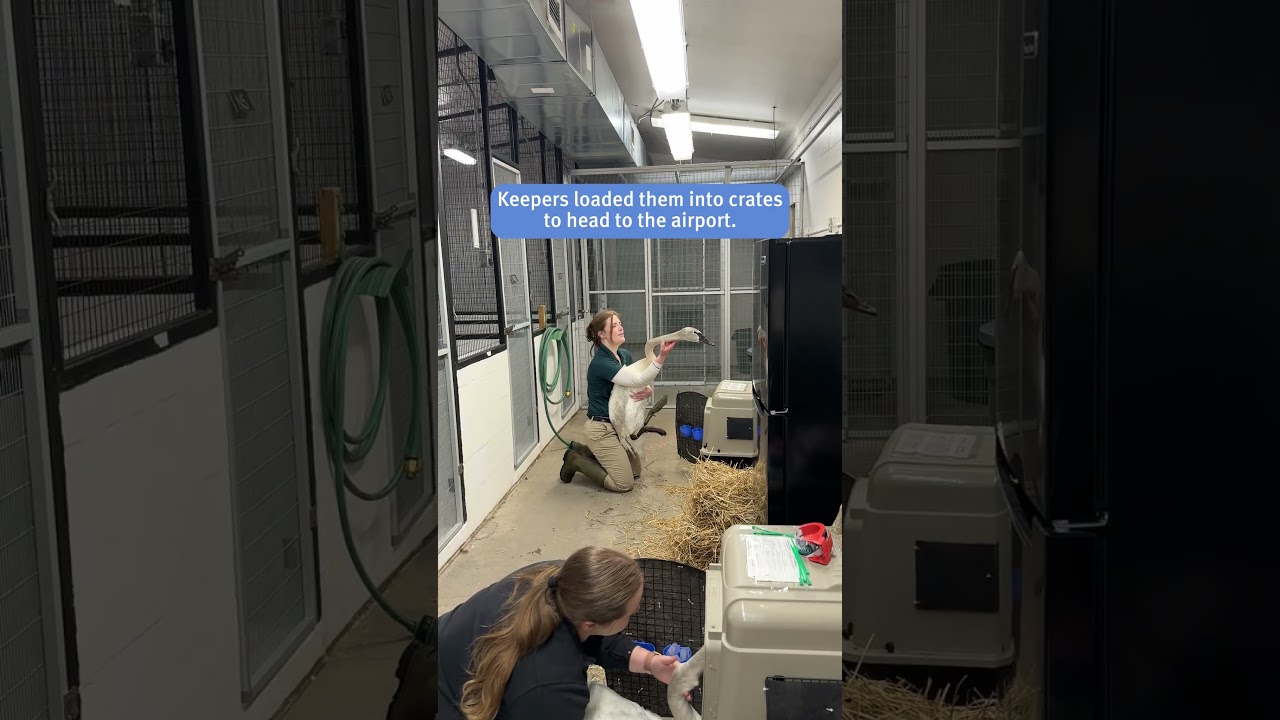– The role of Saint Louis Zoo in trumpeter swan conservation efforts
– The lifecycle and challenges faced by trumpeter swans in the wild
– Strategies for successful reintroduction of zoo-bred trumpeter swans into their natural habitat
– The significance of public education and engagement in wildlife conservation programs
The Saint Louis Zoo has taken significant strides in conserving the trumpeter swan, which has faced near extinction. By focusing on breeding initiatives and strategic reintroduction programs, the zoo has played a pivotal role in bolstering the swan population numbers and enhancing their chances of survival in the wild. This article delves into the zoo’s multifaceted approach, the trumpeter swan’s natural history and challenges, and the overarching importance of comprehensive conservation strategies that include public involvement.
Trumpeter swans, distinguished by their impressive size and distinctive call, once thrived across North America. However, by the early 20th century, unregulated hunting and habitat loss had drastically reduced their numbers, pushing them to extinction. Recognizing the urgent need for intervention, conservationists and zoological institutions, including the Saint Louis Zoo, launched efforts to save and recover the species.
The Saint Louis Zoo commenced a rigorous breeding program to increase the gene pool diversity of the trumpeter swans and prepare captive-bred juveniles for life in the wild. This program involves close monitoring of the health, growth and development of the swans, ensuring they possess the necessary skills for survival beyond the zoo’s confines. The process extends to selecting suitable release sites that mirror the swan’s natural habitats, facilitating a smoother transition to wild living.
Critical to the swans’ reintroduction is understanding their lifecycle, behavior, and ecological challenges. Trumpeter swans are monogamous birds that require large wetlands for breeding and feeding. The degradation of their natural habitats due to urbanization and pollution poses significant hurdles to their survival and reproduction. By choosing and sometimes rehabilitating release sites, the Saint Louis Zoo and its conservation partners work to mitigate these challenges, enhancing the swans’ chances of establishing stable populations.
Educational efforts form another cornerstone of the zoo’s conservation initiatives. Public engagement and awareness campaigns are crucial in fostering a conservation-oriented mindset. The Saint Louis Zoo employs educational programs, events, and multimedia resources, such as video descriptions of the swans’ journey to the wild, to highlight the importance of species conservation and habitat preservation. These efforts aim to inspire collective action in addressing the broader environmental issues that affect trumpeter swans and countless other species.
The looming threat of climate change and continued habitat destruction emphasizes the importance of ongoing conservation work for trumpeter swans. Adaptive management strategies that account for changing environmental conditions and emerging threats are necessary to secure the future of trumpeter swans in the wild. The Saint Louis Zoo’s endeavors in breeding, reintroduction, and public education contribute significantly to these efforts, offering hope for the trumpeter swan’s resurgence across North America.
In closing, the journey of the Saint Louis Zoo’s trumpeter swans from captive breeding to reintroduction into the wild is a testament to wildlife conservation’s complex yet rewarding nature. It underscores the indispensable role of zoological institutions in species recovery efforts, the intricacies of preparing zoo-bred animals for the wild, and the vital importance of public engagement in conservation efforts. Through sustained commitment and collaborative initiatives, the hope for a stable and thriving future for trumpeter swans continues to grow, reflecting the broader goals of wildlife preservation and environmental stewardship.
*****
Source Description
Wish our favorite swan siblings well on their journey to the wild! 🦢🦢
Two trumpeter swans who hatched at the Zoo in May 2023 made a recent cross-country journey for an important conservation mission. They are set to be released to a wildlife area in eastern Oregon in June as part of a newly formed flock of trumpeter swans from nine zoos across the country.
The wild trumpeter swan population has rapidly dwindled in Oregon to just six breeding pairs in 2023. Conservationists hope the release of zoo-hatched swans will help grow a self-sustaining, wild population in the state. The project aims to avoid local extinction of the beautiful species named for its trumpet-like honks.
The Saint Louis Zoo swans recently traveled by plane and arrived in Zoo Idaho in Pocatello. They are now bonding there with their new flock and getting used to living with limited human interaction before the release.
Trumpeter swans are a conservation success story. The species was on the brink of extinction in the early 1900s, but an estimated 50,000 to 60,000 live in North America today.


